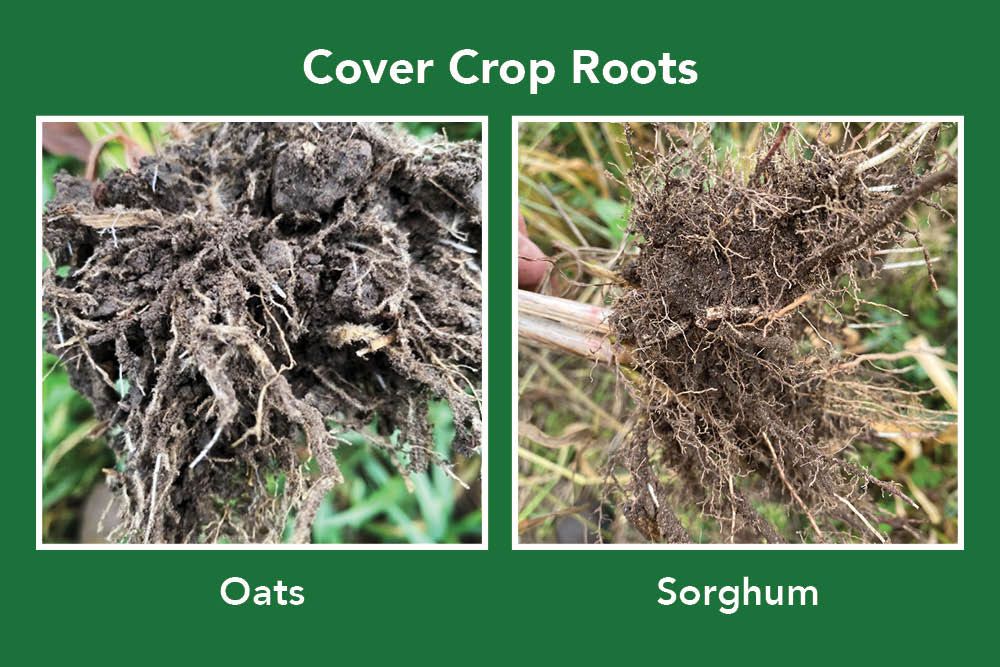The biological benefits of cover crops

By Ben Van Dieten, Agricultural Stewardship Supervisor, Maitland Conservation
When you think about plants, you may picture leaves, flowers, or maybe fruit. What about the parts you can’t see underground? Plant roots might not look impressive but they have a critical role in the maintenance and improvement of soil health — especially when we’re talking about cover crop roots.
Cover crops are plants grown mainly to protect and improve the soil, not to harvest for food. They provide many benefits such as erosion control, weed suppression and nutrient cycling. One of the neatest benefits of cover crops happens through their root system with something called root exudates.
Root exudates are organic compounds released by living plant roots into the surrounding soil. They play an important role in feeding soil micro-organisms, improving soil structure and helping plants overcome environmental stress.
Feeding Soil Microorganisms
- Similar to your gut microbiome, soil has a microbiome that is full of life – including bacteria, fungi and other micro-organisms. These micro-organisms eat the root exudates released by the plants and, in return, they provide the plants with nutrients and water.
Building Soil Structure
- Certain root exudates provide a glue-like substance that binds soil particles together. Over time, this creates a very well-structured soil, having about 50 per cent open pore spaces that can hold air and water, much like a sponge. This improved structure allows plant roots to grow deeper and more easily access and absorb nutrients and water.
- A healthy soil structure also means that the soil is less susceptible to erosion. This protects our water from soil particles that may carry unwanted chemicals, minerals and pathogens.
Overcoming Environmental Stress
- Under stressful conditions, such as drought or disease, plants can alter the type of root exudates they release to help them overcome those stresses. For example, root exudates that are released under drought conditions will help plants retain water and reduce moisture loss.
Cover crops are doing a lot more behind the scenes than we may realize! Next time you pass a cover crop field, remember that while the plants are growing, their roots are working hard below the surface. Different cover crop species release different types and quantities of root exudates. This is one of the reasons it is important to have a mixture of different species growing.
Thanks to the power of cover crops and their root exudates, they enhance soil life and create healthy, stable homes for the main crops to thrive. Healthy soil is a key piece of the puzzle for protecting our water quality in Lake Huron.
If you would like to find out more about cover crops, and grant incentives to help plant them, contact your local conservation authority.
